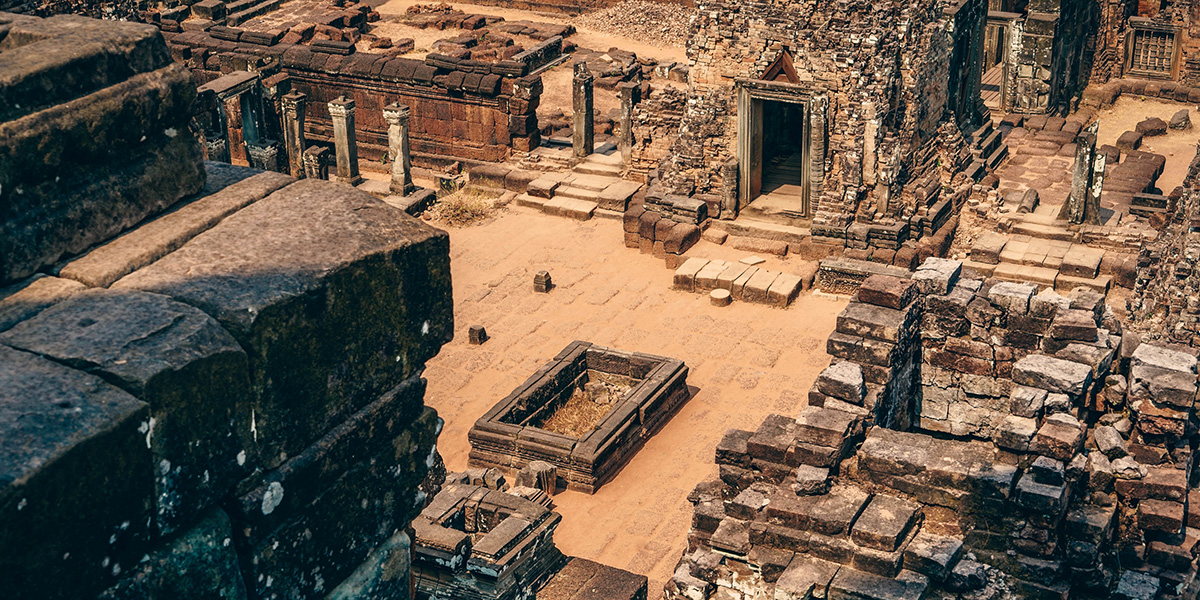In today’s world, many people question the reliability and validity of the Bible. There is a lot of doubt concerning Biblical historical accuracy, as many believe it is merely a book of fairy tales and myths. But what does the evidence suggest? Many might be surprised to find there is a copious amount of Biblical archaeological evidence supporting its veracity.
Don’t believe in God yet? Please read “Intelligent Design vs Naturalism” before reading this article. It is important to take a step by step approach with apologetics.
Many people see the Bible as merely a book of legends and folklore, without any real historical value. But what if we found that there is a prolific amount of archaeological evidence which supports the Bible? If archaeology could corroborate and validate people, places, events, etc., perhaps our perspective would radically change.
If we found extensive Biblical archaeological evidence, perhaps we would begin to view the Bible less as a book of fairy tales, and more like an ancient history book.
25,000 Finds Supporting Bible Record
Currently, there have been over 25,000 archaeological finds which support the Biblical narrative. In fact, there has been no valid archaeological find which has disproved the Biblical narrative. If there is actual physical evidence which supports the Bible, maybe it’s words would and should hold more weight.
Quotes About Biblical Archaeological Evidence from Prominent Figures:
“As a matter of fact, however, it may be stated categorically that no archaeological discovery has ever controverted a biblical reference. Scores of archaeological findings have been made which confirm in clear outline or exact detail historical statements in the Bible”
– Nelson Glueck, Archeologist, “Rivers in the Desert”
“In extraordinary ways, modern archaeology has affirmed the historical core of the Old and New Testaments—corroborating key portions of the stories of Israel’s patriarchs, the Exodus, the Davidic monarchy, and the life and times of Jesus.”
– Jeffery Sheler, “Is the Bible True,” US News & World Report (secular news source)
Biblical archaeological evidence
The following Biblical archaeological evidence is listed in no particular order of time or importance. These items from archaeology digs and excavations corroborate and parallel the Biblical narrative. Below is a compiled list of just a fraction of historical finds which prove the Bible is at the very least an ancient history book:
1) Tomb of Jesus Christ

Perhaps one of the most powerful and compelling pieces of Biblical archaeological evidence found has been the tomb of Jesus Christ. The tomb dates back to an estimated 1,700 years. Rumored to have been discovered in 345 A.D. by the mother of Emperor Constantine, the tomb is currently a grand spectacle for Christians and non-Christians alike.
After it’s discovery, the Romans built a shrine and church on top in order to protect the tomb. When the tomb was initially opened in 2017, it was examined and analysed by forensic researchers. They found that the quartz within limestone hidden underneath the church had been exposed to sunlight around 345 A.D. In turn, this confirms the discovery story by Helena, mother of Emperor Constantine, around the same time.
If this is indeed the authentic tomb of Jesus, the historical figure of Christ gains even more credibility.
2) The Dead Sea Scrolls

The Dead Sea Scrolls are a collection of ancient Jewish manuscript fragments. Written in mostly Hebrew, these scrolls were discovered in 1946/47 and in 1956, next to the Dead Sea. Researchers have collected around 981 different manuscripts from 11 of the Qumran Caves.
This collection of Dead Sea Scrolls are very significant to Judeo-Christian history. Before this discovery, the oldest manuscripts of the Bible were Masoretic texts dated from between the 7th and 11th century A.D. However, these scrolls were written from around 150 B.C. and 70 A.D. making them a thousand years older.
There are 225 Biblical texts within the Dead Sea Scrolls which comprise around 22% of the total collection. These scrolls contain parts from all the Books of the Old Testament protocanon excluding one. Additionally, they contain four of the deuterocanonical books included in Catholic Bibles. Below are the books represented in the Dead Sea Scrolls:
| Book | Number Found |
|---|---|
| Psalms | 39 |
| Deuteronomy | 33 |
| 1 Enoch | 25 |
| Genesis | 24 |
| Isaiah | 22 |
| Jubilees | 21 |
| Exodus | 18 |
| Leviticus | 17 |
| Numbers | 11 |
| Minor Prophets | 10 |
| Daniel | 8 |
| Jeremiah | 6 |
| Ezekiel | 6 |
| Job | 6 |
| Tobit | 5 |
| 1 & 2 Kings | 4 |
| 1 & 2 Samuel | 4 |
| Judges | 4 |
| Song of Songs | 4 |
| Ruth | 4 |
| Lamentations | 4 |
| Sirach | 3 |
| Ecclesiastes | 2 |
| Joshua | 2 |
The Dead Sea scrolls are such a significant find because they provide extra Biblical precedence of the Old Testament. These are scrolls are external sources containing the same books from the Bible. The Dead Sea Scrolls corroborate the validity and consistency of the Old Testament books in the Bible.
3) Pagan Center at Hippos/Sussita:

Directly overlooking the Sea of Galilee, archaeologists discovered a theater and bathhouse. This complex was apart of a pagan cult site, which was discussed in the Bible. Hippos/Sussita were apart of the pagan Roman cities comprising the Decapolis, which were mentioned in Matthew 4:25 of the New Testament. The first piece of Biblical archaeological evidence suggesting the existence of this cult complex was the discovery of a mask of the Roman god Pan in 2015.
4) Inscription of Caesar Augustus on coins from that era:

Caesar Augustus was the reigning emperor of Rome during the time of Jesus’ ministry. Coinage is perhaps one of the most solid pieces of evidence we can get from a time period, being authorized and accredited. This piece of Biblical archaeological evidence affirms that Jesus Christ and Caesar Augustus were contemporaries, as described in Luke 2:1:
And it came to pass in those days, that there went out a decree from Caesar Augustus that all the world should be taxed.
Additionally, it corroborates the passage of Matthew 22:15-22 where Jesus and the Pharisees discuss this very coinage with the likeness of Caesar Augustus inscribed upon it.
5) Ancient catacomb painting

This ancient depiction of Jesus was discovered within the Roman catacombs of St. Domitila. The 1,600 year old painting depicts Christ welcoming the dead. After laser cleaning, the mural was found 400 years ago in the burial chamber of a wealthy merchant.
6) Temple Altar for Augustus at Caesarea:

Within Caesarea Maritima archaeologists found the remains of an altar dedicated to Augustus Caesar. Archaeologists discovered that underneath the altar level were two large halls, just as the historian Josephus recorded. During the Byzantine period, a church was built on the temple site.
7) Synagogue at Capernaum:

The first century Synagogue at Capernaum is still visible today in what was the small fishing village on the northern shore of the Sea of Galilee. This archaeological finding from the Bible corroborates the passage of Luke 7, where Jesus was speaking to an audience of people.








Your article says in the section about the Masoretic text that they were written about the 10th Century BC. This is a serious mistake . The oldest MT is from about 9th Century AD.
You are absolutely right, thank you for catching the error. All of the sources I have found date the oldest MT from between the 7th and 11th century A.D. Of course there is still debate on when the texts were actually written.
The correction has been made in the article. Thank you Andrew!
Wouldn’t a Roman coin used during Jesus’ ministry more likely depict the head of the then emperor Tiberius rather than the deceased Augustus?